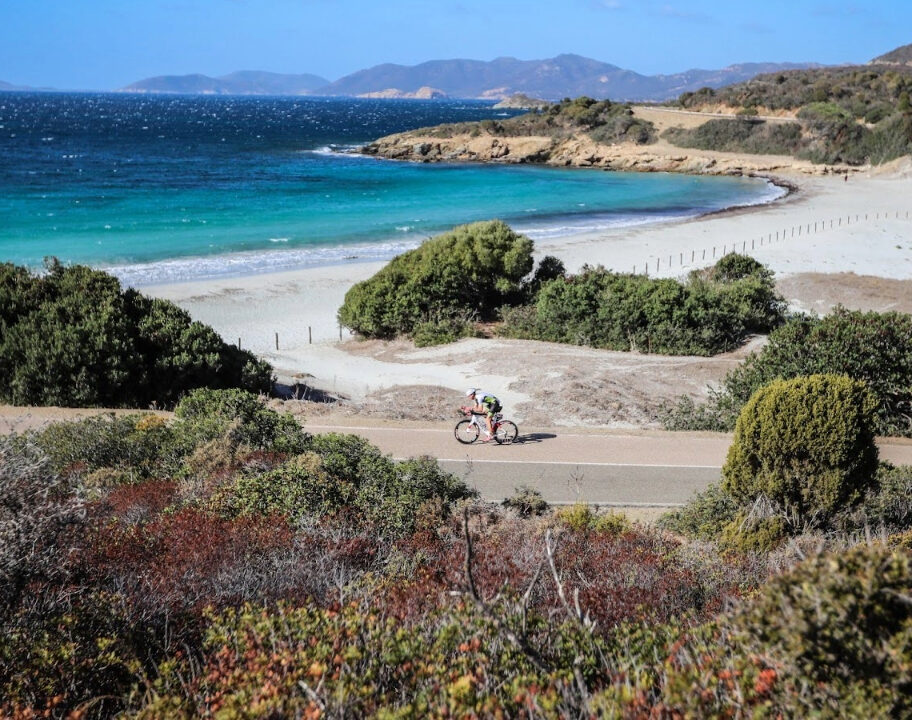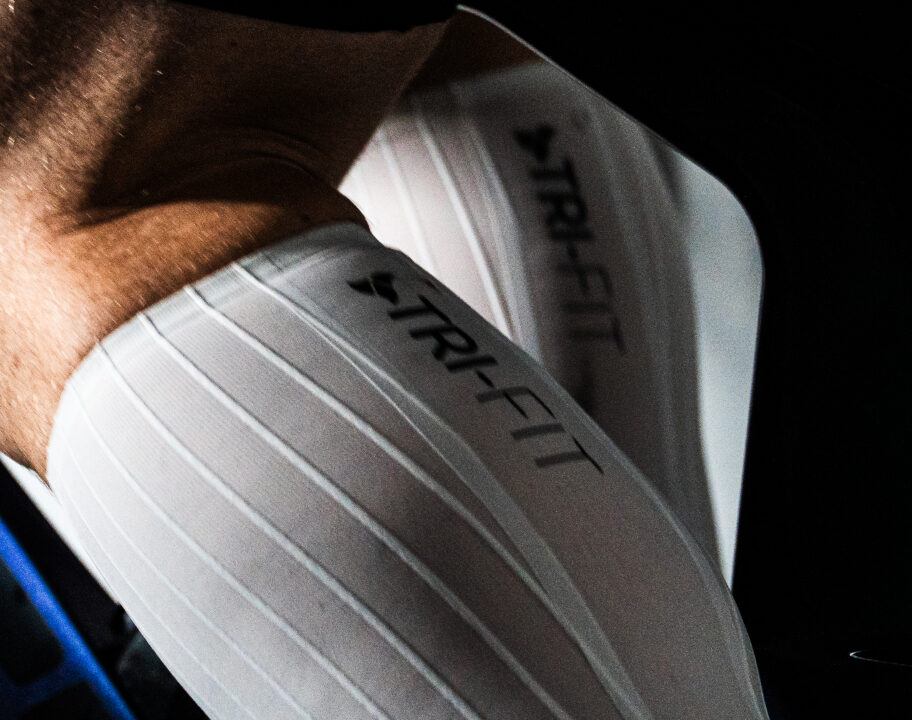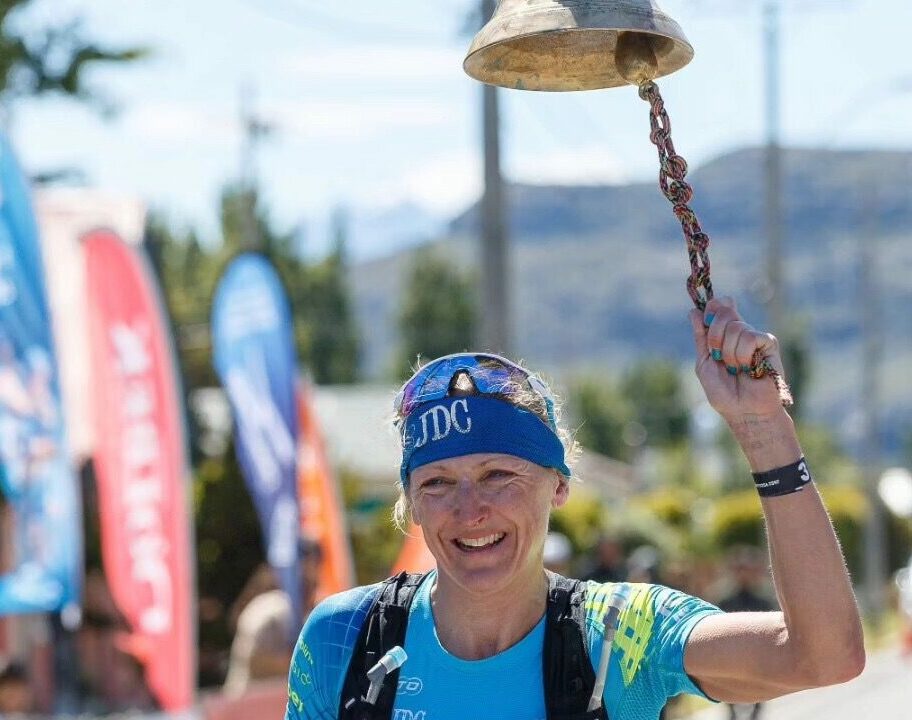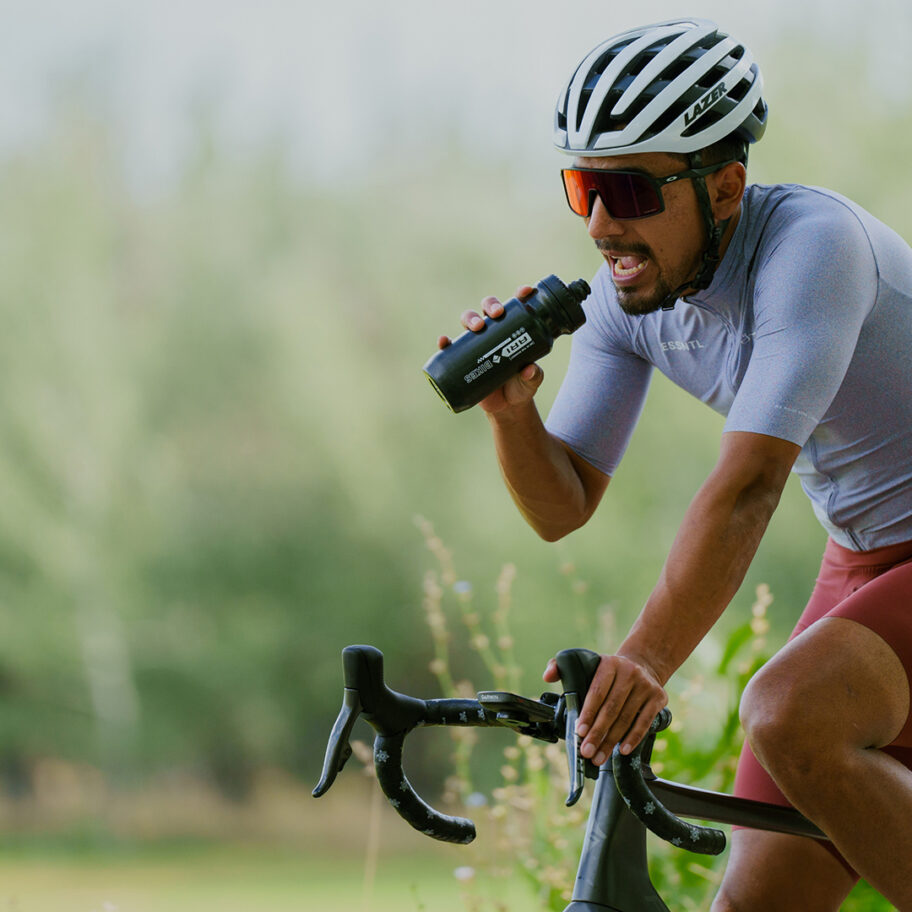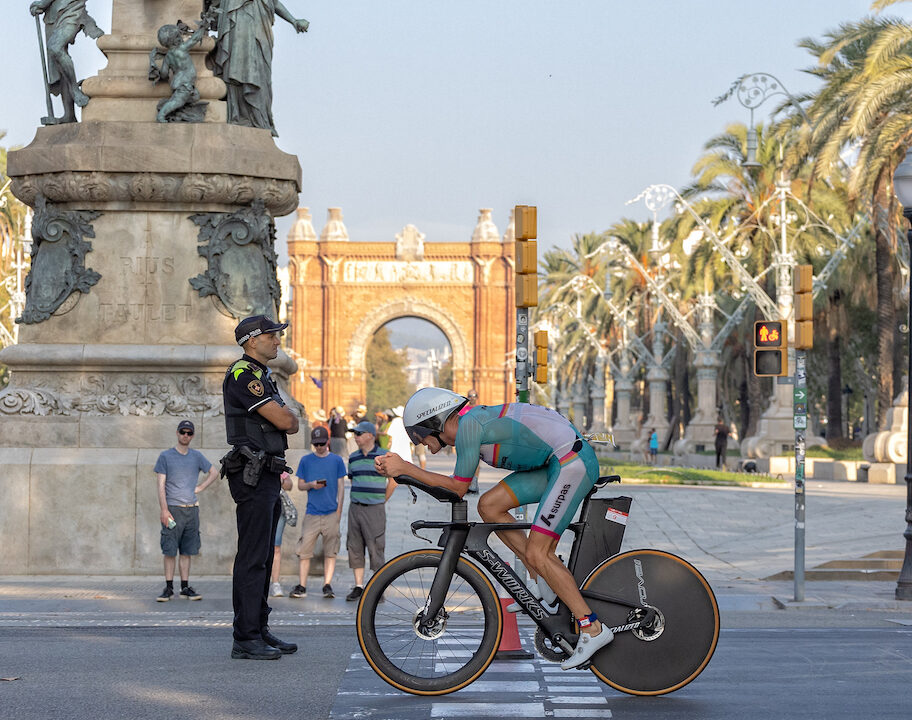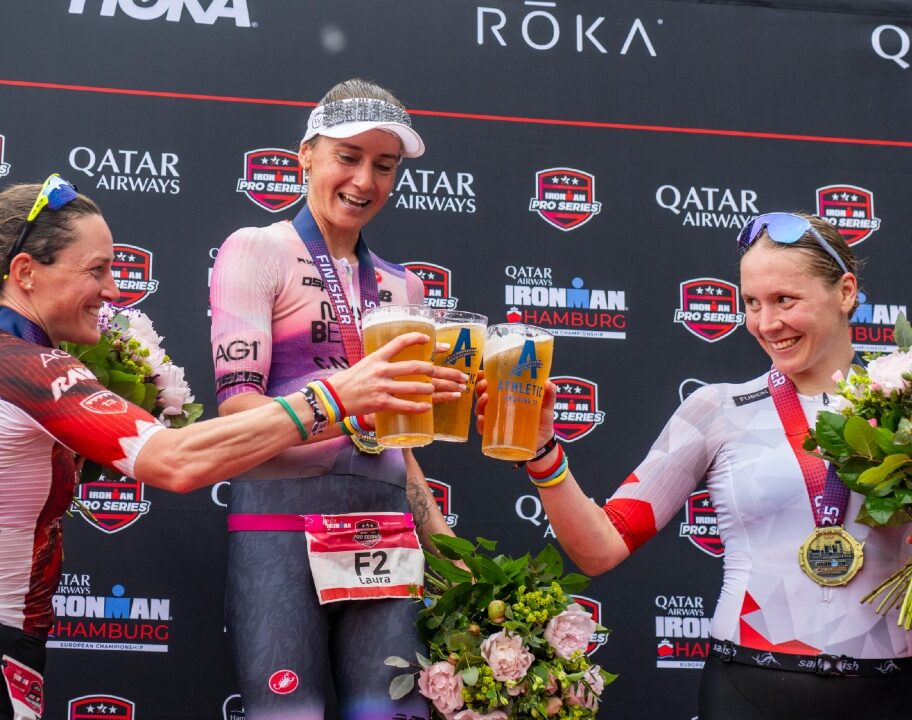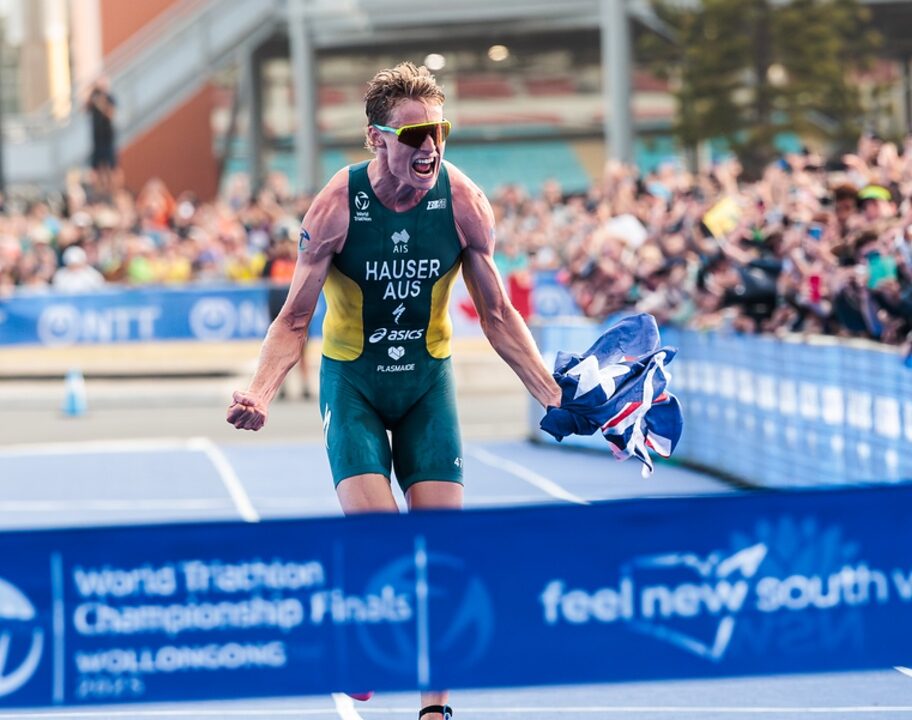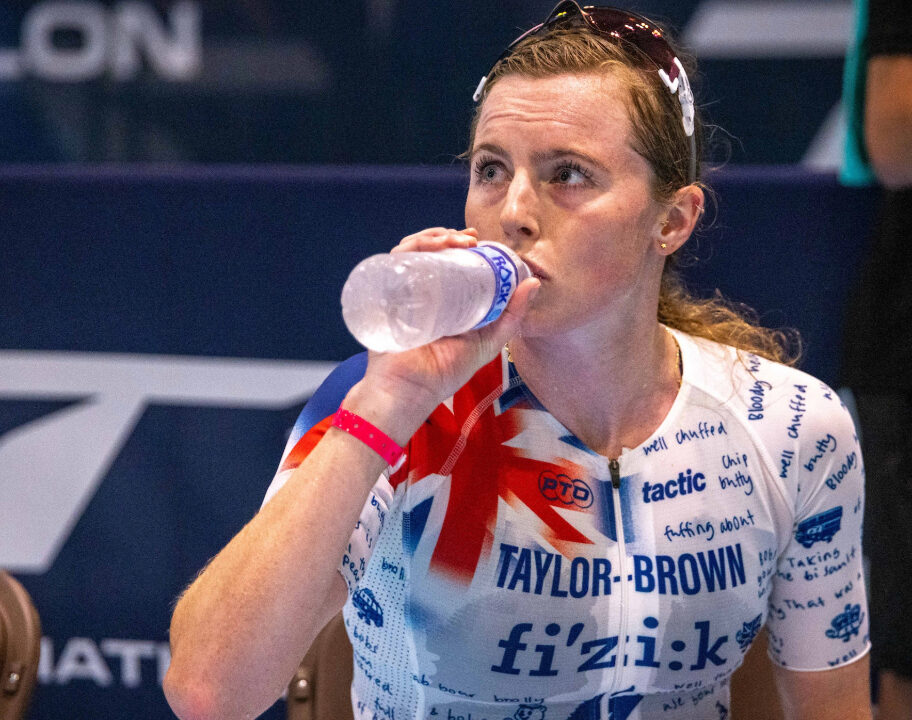Maybe it’s because it’s so technical. Or maybe it’s just because it’s often the discipline that has us triathletes feeling the most frustrated because the effort to gains ratio just feels totally off. But when it comes to triathlon swim training, there are a whole bunch of contradictory myths flying around. You should kick. You shouldn’t kick. Learn to tumble turn. Don’t bother learning to tumble turn. It’s all about volume. It’s all about technique. Yikes!
To help get some clarity, I played a game of triathlon swim training ‘true or false’ with expert swim coach and national champion swimmer, Lucas David.
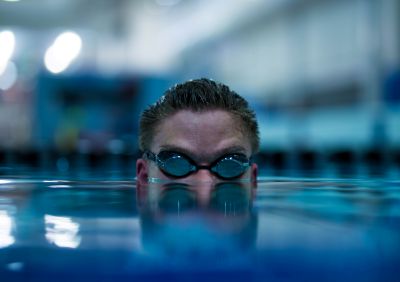
True or false: Triathletes shouldn’t bother kicking in the swim?
You’re going to use your legs all day long for the swim and the bike, so surely you should just let them drag along nicely behind you (preferably clad in the most buoyant wetsuit you can find) during the swim in a triathlon, right? If you hate kicking, I’ve got bad news… grab your kick board and swim fins, we’re doing kick drills.
“This is SO false,” says Coach Lucas. “The whole not kicking thing is one of the biggest misconceptions in triathlon swimming!”
“People say, ‘Don’t kick!’ – but that’s usually because they were never taught how to kick properly, and when they try, it just burns out their legs.”
How to get better at kicking more efficiently
“The key? Kick at the surface, not below it! A wetsuit might mask a weak kick, but it won’t fix it. If you rely on your wetsuit to keep your legs up, you’re just covering up bad technique.
“Need proof? Go watch the best triathletes in the world and try to find one who doesn’t kick during a race. Spoiler alert: you won’t!”
True or false: To get faster at swimming, you’ve just got to do loads more volume
If you want to get faster at swimming, you’ve just got to swim more – right? It might make sense on paper to think that if you just get in the pool more often, and swim more miles. You’ll start to get fitter and faster. But it’s not just about volume, says Lucas.
“This isn’t true at all. If you wanted to be a top tier 100m track sprinter like Usain Bolt, would you just do 1km repeats all the time? You need speed and endurance!”
I can vouch for this myself. I went through ‘I’ve just got to swim more’ phase and started adding in a 5km non-stop endurance swim every Friday (aka, Five K Fridays). And sure, aerobically I got fitter. But all it did was improve my ability to swim slowly (with various bad technique habits) for a longer period of time. My race times didn’t improve – if anything I got slower!
RELATED: Find out how to improve your half Ironman swim split and get an example threshold boosting swim set
Adult onset swimmers will never get fast compared to lifelong swimmers
For those of us who quit our swimming lessons once we reached high school and didn’t spend our teenage years diving into swimming pools at 5am before school, or competing in galas at weekends. We can often feel like we’re in a losing battle against the lifelong swimmers. They make it look so effortless, throw around phrases like ‘feel for the water’ and they don’t even feel the need to religiously use their Garmin to track every pool metre because they actually know how to read use the pool clock. But are we a lost cause?
“Not true!” says Lucas. “It’s all about technique for adult onset swimmers, that’s what separates you from the top tier swimmers.” Time to hit the drills, my friends.
True or false: You can just muscle your way around bad swim technique
Speaking of drills, a debate that crops up from time to time is whether triathletes who want to get faster in the water should just focus on getting stronger instead of spending hours upon hours trying to refine their technique. So is it possible to ‘muscle through’?
“False! You can be as strong as a bodybuilder, but if your technique is trash, you’re just fighting the water instead of moving through it,” Lucas explains.
“Swimming isn’t about brute force—it’s about efficiency. Strength helps, but only if you know how to use it. If you’re muscling through bad technique, you’re wasting energy and slowing yourself down.”
True or false: triathletes don’t need to bother learning how to flip turn
Since starting up swimming again as a necessary evil to do triathlon, I’ve yet to regain the ability to do flip turns (aka tumble turns for my fellow UK-dwellers) without ending up with a nostril-full of chlorine and finding myself facing entirely in the wrong direction. I’ve tried to relearn how to do them, and it’s just not happening. So should I persevere on my quest to look like a ‘proper swimmer’ in the pool, aggressive flip turns and all?
The verdict from Lucas for triathletes competing primarily in open water is no. Thank goodness. “It’s a cool/fun skill to have, but it isn’t needed,” he says.
My logic is that if I find myself doing a flip turn halfway through an open water Ironman swim, something has probably gone quite wrong. I’d rather spend my pool time working on the numerous other flaws in my technique, and practising open water skills like sighting. I do sometimes deliberately miss a push off the wall or stay under water as I touch-turn to replicate the non-stop nature of open water swimming, though.
Get more swimming tips from Coach Lucas
So there you have it, some of the big triathlon swimming myths: BUSTED. If you want more help with you swim training, you can check out some of our other advice articles with Coach Lucas below – or get in touch with him directly on Instagram for 1-1 tips!
- Three common swim training mistakes (and how to fix them)
- How to improve your half Ironman swim time
- Tips to build swimming speed and endurance to level up your Ironman swim split

